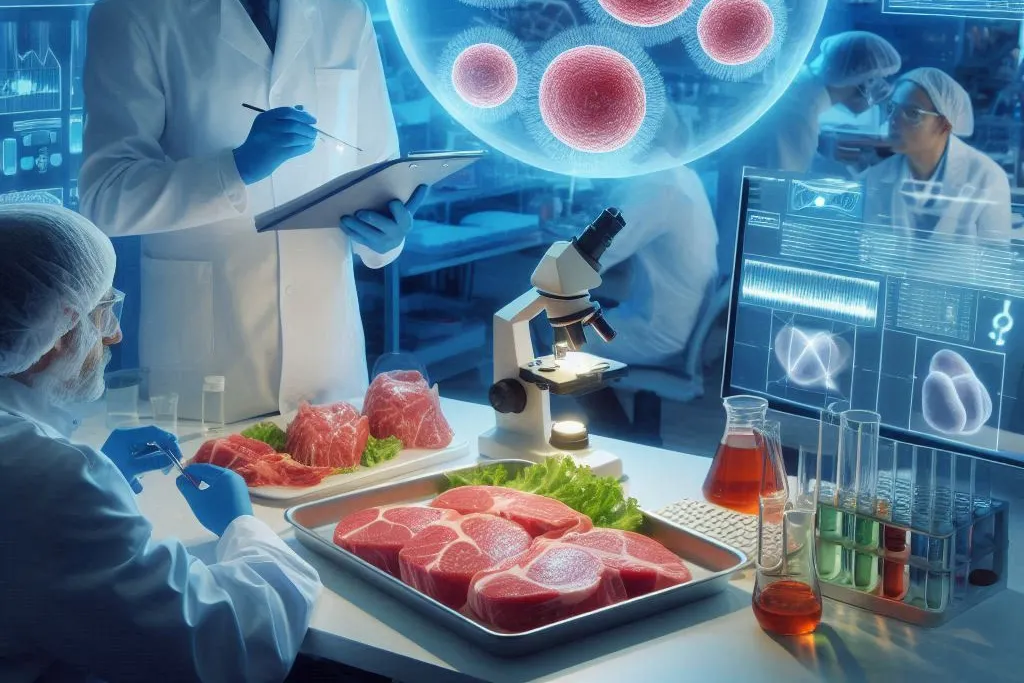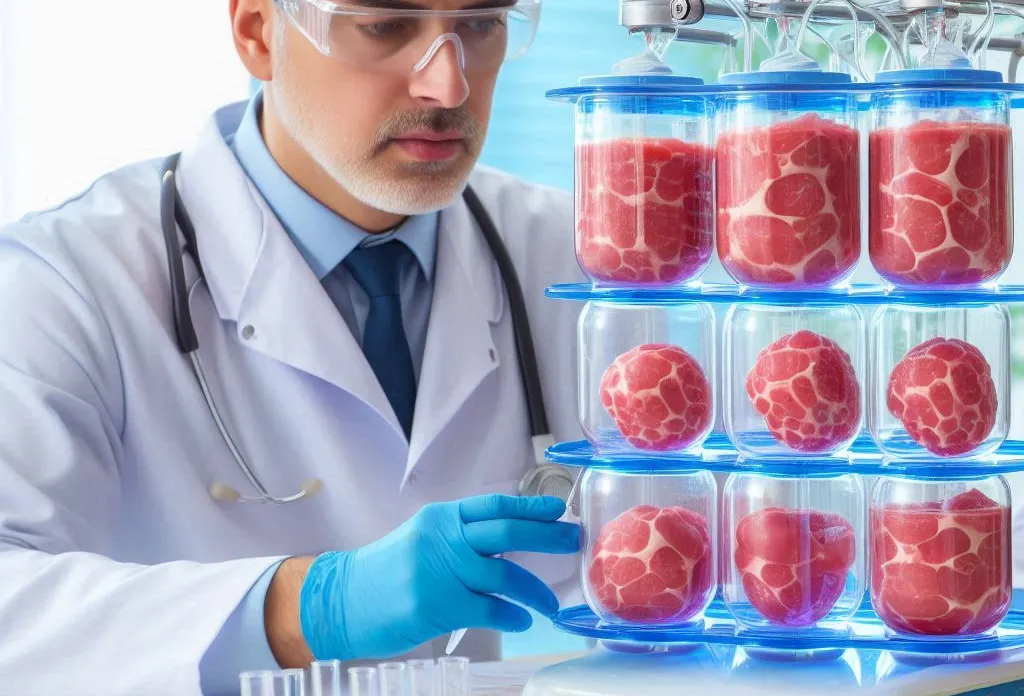A Breakthrough That Could Change Dinner Forever!
Can meat be grown without farm animals? Researchers are developing cost-effective, lab-grown meat using self-sustaining cells!

Cellular agriculture, involving the cultivation of meat from cells grown in bioreactors instead of being obtained from farm animals, is progressing with technological advancements that enhance its feasibility within the food industry.
A significant development has emerged from the Tufts University Center for Cellular Agriculture (TUCCA), under the leadership of David Kaplan, Stern Family Professor of Engineering. Researchers have successfully engineered bovine muscle cells capable of producing their own growth factors, a breakthrough that holds the potential to substantially reduce production costs.
Growth factors, essential in laboratory experiments and cultivated meat production, bind to receptors on cell surfaces, signaling cells to grow and differentiate into specialized mature forms. Findings published in Cell Reports Sustainability describe the modification of stem cells to generate fibroblast growth factor (FGF), a key trigger for the development of skeletal muscle cells, which compose familiar products such as steak and hamburger.
“FGF is not exactly a nutrient. It’s more like an instruction for the cells to behave in a certain way. What we did was engineer bovine muscle stem cells to produce these growth factors and turn on the signaling pathways themselves.”
Andrew Stout
Cost Reduction and Research Progress
Previously, growth factors required external addition to the surrounding liquid, or media. Composed of recombinant proteins and supplied by industrial manufacturers, these growth factors account for a significant portion of cultivated meat production costs, often reaching or exceeding 90%. Due to their short lifespan in cell culture media, frequent replenishment is necessary every few days, posing a challenge to affordability. Eliminating this requirement from the growth media results in substantial cost savings.
Several research initiatives are being led at Tufts University Cellular Agriculture Commercialization Lab, a technology incubator designed to advance university innovations toward industrial-scale applications in commercial settings.
“While we significantly cut the cost of media, there is still some optimization that needs to be done to make it industry-ready. We did see slower growth with the engineered cells, but I think we can overcome that.”
Andrew Stout
Optimization strategies may involve adjusting the level and timing of FGF expression within the cell or modifying other cell growth pathways.
“In this strategy, we’re not adding foreign genes to the cell, just editing and expressing genes that are already there,” explained Stout, highlighting efforts to enhance muscle cell growth for meat production.
Andrew Stout
This approach could also streamline regulatory approval processes, as more stringent regulations apply to the introduction of foreign genes compared to modifications of native genetic material.

Future Directions and Implications
The potential application of this strategy to other types of meat, such as chicken, pork, or fish, remains a key consideration. Confidence in its effectiveness has been expressed.
“All muscle cells and many other cell types typically rely on FGF to grow.”
Andrew Stout
The expectation is that the approach will be extended to other meats, though variations may exist regarding the most effective growth factors for different species.
Ongoing research at TUCCA and other institutions continues to refine cultivated meat technology.
“Work is continuing at TUCCA and elsewhere to improve cultivated meat technology, including exploring ways to reduce the cost of nutrients in the growth media, and improving the texture, taste, and nutritional content of the meat. Products have already been awarded regulatory approval for consumption in the U.S. and globally, although costs and availability remain limiting. I think advances like this will bring us much closer to seeing affordable cultivated meat in our local supermarkets within the next few years.”
David Kaplan
Despite existing challenges, continued innovation may lead to wider accessibility and cost reductions, further integrating cultivated meat into mainstream markets.
https://doi.org/10.1016/j.crsus.2023.100009
Summary
Cultivated meat (also known as cultured meat) is a promising technology that faces substantial cost barriers, which are currently driven by the price of media components. Particularly, growth factors such as fibroblast growth factor 2 (FGF2) drive the cost of serum-free media for relevant cells, including muscle satellite cells. Here, we engineered immortalized bovine satellite cells (iBSCs) for inducible expression of FGF2 and/or mutant RasG12V to overcome media growth factor requirements through autocrine signaling. Engineered cells were able to proliferate over multiple passages in FGF2-free medium, thereby eliminating the need for this costly component. Additionally, cells maintained their myogenicity, albeit with reduced myotube formation. Ultimately, this offers a proof of principle for lower-cost cultured meat production through cell line engineering.
